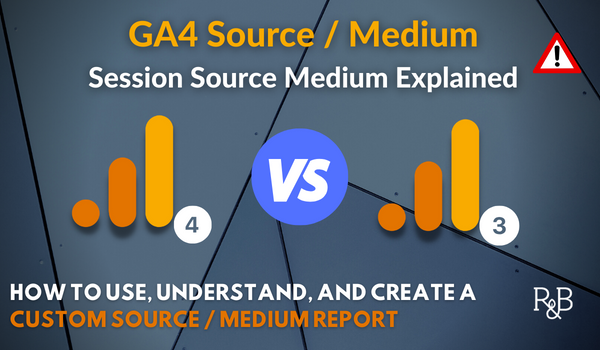The Duty of Secondary Dimensions in Google Analytics: Interpretation and Insights for Advanced Information Evaluation
The Duty of Secondary Dimensions in Google Analytics: Interpretation and Insights for Advanced Information Evaluation
Blog Article
Maximizing Your Data Analysis With Second Dimension in Google Analytics for Informed Decision-Making
Google Analytics, a powerful device in the hands of electronic online marketers and analysts, provides a function understood as Second Dimension. By tapping right into the capacities of Second Measurement, customers can obtain a much more detailed sight of their data, enabling them to make tactical decisions based on a more nuanced and comprehensive evaluation.
Comprehending Additional Dimension Functionality
Understanding the secondary dimension capability in Google Analytics boosts the deepness of data analysis by giving added context to key metrics. By including an additional dimension, analysts can sector and compare data, obtaining understandings that would certainly otherwise remain hidden. This attribute enables users to view information with different lenses, such as the resource of website traffic, individual behavior, or geographical area, using a more comprehensive understanding of web site performance.
When looking exclusively at main metrics,Making use of additional dimensions can expose patterns and correlations that might not be apparent. For example, matching the key metric of page sights with an additional measurement like gadget classification can reveal whether certain tools drive more web traffic to specific web pages. This information can then notify internet site optimization approaches tailored to various tool customers.
Executing Additional Measurement in Records
Building upon the understandings obtained through secondary dimension analysis, integrating these measurements effectively into reports in Google Analytics is critical for extracting actionable data-driven decisions. what is a secondary dimension in google analytics. By implementing additional dimensions in reports, individuals can dive deeper into the efficiency metrics of their internet site or app. This attribute permits an extra comprehensive analysis by providing added context to the key measurement picked
To implement a secondary measurement in records, just navigate to the desired report in Google Analytics and click on the "Second measurement" tab situated above the data table. From there, customers can pick from a large variety of additional dimensions such as 'Source/Medium', 'Tool Group', or 'Touchdown Page'. Selecting one of the most pertinent second dimension will rely on the details understandings you are seeking to uncover.
Using secondary measurements in records not just boosts the deepness of analysis but additionally aids in identifying fads, patterns, and relationships that might have otherwise gone unnoticed. This critical technique to data analysis enables organizations to make educated decisions that drive development and success.

Studying Information With Additional Measurements
Upon incorporating second measurements right into information evaluation within Google Analytics, an in-depth exam of key performance indicators can be achieved, providing important insights for tactical decision-making. By utilizing second dimensions, analysts can further explore their primary information measurements, such as website traffic sources or customer demographics, to uncover patterns or trends that might not be immediately apparent. This much deeper level of analysis enables a more comprehensive understanding of customer habits and interactions on a site or digital system.
Evaluating information with additional dimensions enables online marketers and site proprietors to respond to more specific inquiries regarding their audience, material performance, and marketing initiatives. By integrating the key measurement of traffic resources with a secondary measurement like geographical location, services can identify which areas drive the most important website traffic to their site. This sort of granular insight can educate advertising and marketing techniques, web content development, and internet site optimization efforts to much better satisfy the requirements and choices of their target market.
Leveraging Secondary Measurements for Insights
By integrating secondary dimensions properly, see this website analysts can draw out deeper insights from information embed in Google Analytics, enhancing the understanding of customer behavior and efficiency metrics. Leveraging second dimensions includes incorporating various characteristics or metrics with main data to discover patterns and fads that might not appear initially look. By including a second dimension such as 'Device Classification' to a record on web site web traffic, experts can recognize whether customer actions differs across different devices like desktops, mobile phones, or tablets.
Furthermore, utilizing secondary dimensions allows experts to sector information a lot more granularly, allowing them to determine certain target market sections or geographic places that display unique behaviors. what is a secondary dimension in google analytics. This segmentation can be instrumental in tailoring marketing techniques, maximizing website content, or boosting customer experience based upon the distinct qualities of each segment
Basically, leveraging additional dimensions in Google Analytics empowers experts to dive much deeper into information, acquire significant understandings, and make notified decisions that drive business development and success.
Enhancing Decision-Making With Additional Dimensions
Making use of additional dimensions in data evaluation supplies a strategic benefit by discovering actionable insights that drive informed decision-making in Google Analytics. By boosting decision-making through second measurements, users can dive deeper right into their information to extract valuable info that may not be right away obvious. These additional measurements provide an even more comprehensive sight of user habits, interactions, and end results, allowing analysts to make even more enlightened decisions based upon concrete data.
Via the application of secondary dimensions, experts can section and filter information to identify patterns, patterns, and correlations that may affect decision-making processes. This improved level of granularity permits an extra targeted technique to evaluating information, resulting in even more informative and exact conclusions.
Furthermore, second dimensions supply the possibility to compare different information points side-by-side, helping with an extra extensive analysis of performance metrics and KPIs. By leveraging secondary dimensions successfully, organizations can optimize their approaches, enhance individual experiences, and inevitably attain their goals with confidence.
Final Thought

Structure upon the understandings acquired via secondary dimension evaluation, learn the facts here now including these dimensions successfully right into records in Google Analytics is crucial for removing workable data-driven decisions.To execute an additional measurement in records, simply navigate to the preferred record in Google Analytics and click on the "Secondary dimension" tab located over the information table. By making use of secondary dimensions, analysts can additionally study their key data measurements, such as website traffic sources or individual demographics, to uncover patterns or trends that may not be instantly obvious. By integrating the key measurement of website traffic resources with a secondary dimension like geographical place, organizations can identify which regions drive the most valuable traffic to their site.By incorporating secondary dimensions effectively, analysts can draw out deeper insights from data sets in Google Analytics, enhancing the understanding of user behavior and efficiency metrics.
Report this page